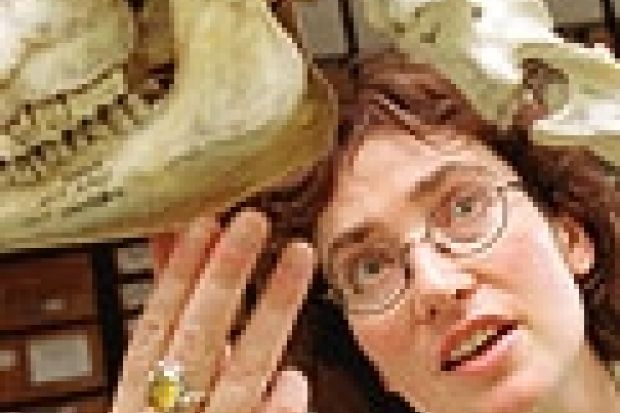Despite extreme heat, archaeologists converge every year from July to September on a dusty Turkish plain. Çatalhöyük has become one of the world's busiest archaeological sites, but size can have its ups and its downs, says Louise Martin, in the second of our series on what researchers get up to in the summer.
Every summer for the past seven years I have been making my way to central Turkey, to Çatalhöyük. Looking like a large mound of earth rising from the flat Konya Plain, it is in fact one of the most intriguing prehistoric sites in western Asia, home to 9,000-year-old mud-brick houses adorned with bulls' heads and amazing paintings of people dancing around animals.
The first time I went, I was slightly disappointed with the surrounding area. Modern irrigation agriculture has altered the river's course, tamed the landscape and stripped it of anything that would resemble a Neolithic environment. It just did not feel like a wild enough setting for a site that had captured the world's imagination.
But today, I have developed a real affection for the place and each year as we drive along the dusty roads to get there, it feels a bit like going home.
We usually go into the field between July and September when the plain is at its hottest and driest. Timing is dictated by university vacations, but also by the need to avoid the harsh cold winters when the ground routinely freezes and digging holes becomes tricky.
Çatalhöyük is by far the largest archaeological project that Ihave been involved in. As well as the excavation areas, there is a large dig house containing laboratories for studying excavated material, a computer room, even a museum, as well as dormitories and living space. The complex is certainly very different from the tents or basic accommodation that most of us know from other digs. Because of the presence of labs and other research facilities, as well as the dig itself, it really succeeds in bringing together researchers from all stages of the archaeological process.
At times, as the project has grown, there have been more than 100 people on site in summer - a dense concentration of expertise and far more than would be found in most university departments. Groups - from Turkish institutions, as well as Britain, the United States, Greece, Germany and Poland, and individuals from many other nationalities - bring their own methods and theories. This is great for discussions and exchange of ideas, although healthy competitiveness and rivalry is not entirely absent. The comparison of methods and approaches has actually become a respectable area of archaeological study in itself as the discipline becomes increasingly self aware. The exploration of different practices is positively encouraged at Çatalhöyük.
The mix of people on site is also brilliant socially. Groups sit around on the dig house veranda in the evenings, chatting, drinking, singing and dancing. A shared sense of purpose does wonders for encouraging interaction.
Having such a wealth of expertise on site and in adjacent labs has advantages and changes the way we work. For example, it is possible to design compatible methods and approaches, to check data with the people who are actually producing them, to get further information on finds and contexts and to compare results with others easily. I have personally developed close collaborations with colleagues I have met on the project, which is one of the joys of doing research in a field environment.
My own involvement is as one of a team of faunal specialists, meaning I spend much of my time identifying and recording animal-bone remains in the field laboratory. The research questions are fascinating because human-animal interaction was going through dramatic changes in the Neolithic period, and Çatalhöyük is particularly exciting as it provides such rich evidence of animal symbolism.
But there are downsides to having such a concentration of people at one dig. The large numbers make it very busy, to the extent that some seasons there will be people to whom I never talk, people whose names I never quite catch, which is strange since we are all part of one team.
Wide collaboration also becomes difficult with such a large group. Whereas five years ago, everyone on the project could sit around in one room for seminars and discussions, this is no longer possible and fragmentation into smaller groups is inevitable.
Another slight frustration is that the large amount of expertise tends to lead to individuals being very specialised in the archaeological work they do. For example, at Çatalhöyük I feel quite pigeon-holed as an animal-bone archaeologist, whereas on smaller projects, each team member would probably be involved in a wider range of activities such as digging and drawing, as well as their own specialism. The upside is that we tend to get a great deal of focused work done.
We also find ourselves doing a wide variety of non-research activities from showing visitors around to training Turkish students in aspects of archaeology not covered in Turkish universities. Since Çatalhöyük attracts a fair amount of media attention, we have all become well practised at giving interviews.
Friday is our day off and most weeks the group hires a bus and makes a trip somewhere - either to a nearby site, or to Konya, the local town, to visit museums, shop or just for a change of tea-drinking scenery.
My own preference is to escape to the hamam, the Turkish bath, where I can spend a peaceful afternoon unwinding away from the buzz and excitement of Çatalhöyük.
Louise Martin is a lecturer in archaeology at University College London.
